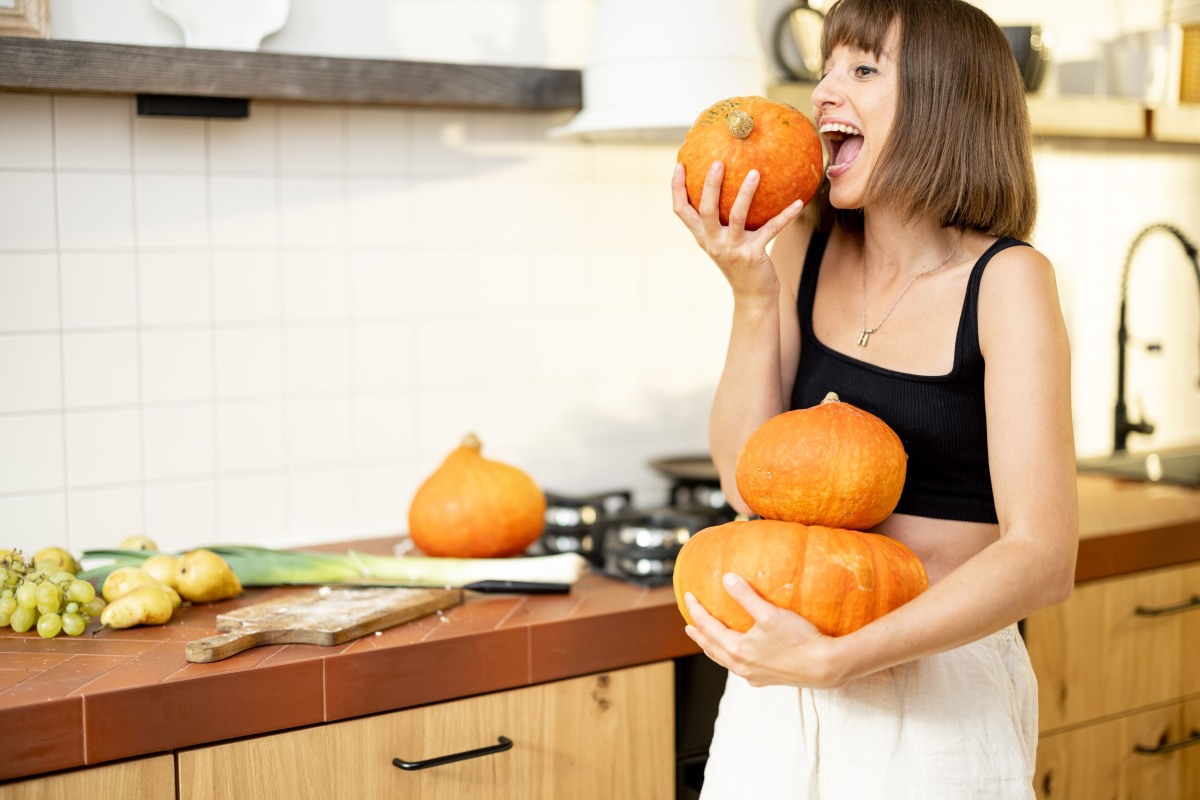
As the ghosts of the spooky season fade and the laughter of trick-or-treaters becomes a distant echo, a new question arises: What to do with pumpkins after Halloween? Those once-glowing jack-o’-lanterns are now waiting for their second act.
Imagine transforming them into beautiful bird feeders, crafting them into centerpieces, or letting them enrich your garden as nourishing compost. The world of post-Halloween pumpkin possibilities is vast and exciting. So, let’s dive into a world of gourd-geous transformations.
1. Craft a Pretty Centerpiece
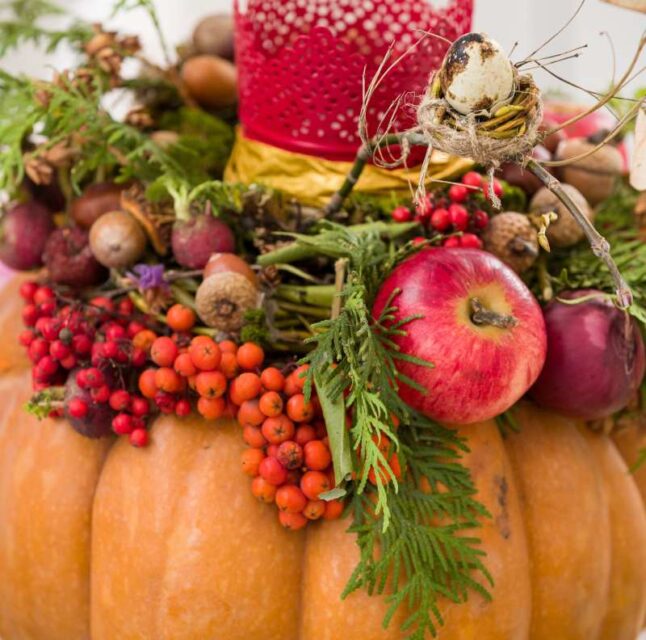
Turning a simple, old pumpkin into a show-stopping centerpiece is a delightful way to transition from the spooky spirit of Halloween to the warm embrace of Thanksgiving.
- Cut off the top in a circular or zigzag pattern for added flair if you’re starting with a whole pumpkin;
- Carefully scoop out the insides, ensuring a clean, hollow space;
- For those with a pumpkin already carved for Halloween — you’re one step ahead!
- Place a cup or small vase inside to hold water. This ensures longevity for your flowers and keeps the pumpkin’s inside from getting too soggy;
- Arrange your choice of fresh, vibrant flowers. Think of deep reds, bright oranges, and golden yellows to truly capture the essence of fall.
Whether you’re hosting a dinner or simply want to elevate your dining table’s aesthetics, a DIY pumpkin centerpiece is a stellar choice.
2. Turn Your Pumpkin Into a Bird Feeder
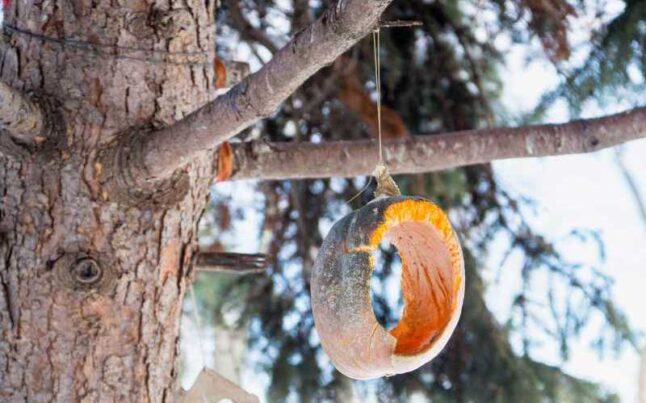
The charm of autumn extends beyond the warm hues of falling leaves. As temperatures drop, our feathery friends start their search for food, making it the perfect season to craft a unique bird feeder from your post-Halloween pumpkin.
To begin, simply cut off the top of your pumpkin to form a bowl-like shape. This creates an open space perfect for holding birdseed. Place some twigs or small branches, and lay the birdseed on top.
To hang your pumpkin bird feeder, thread some durable twine or rope through the sides of the pumpkin, tying it securely. Then, find a sturdy branch and hang your creation for the birds to discover.
3. Revitalize Your Skin
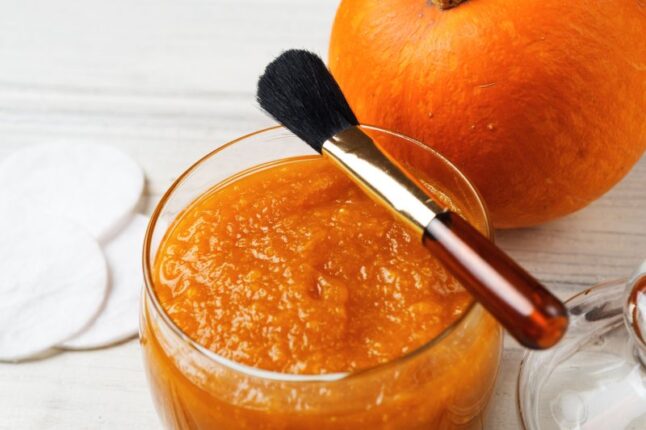
With just a few natural ingredients and a star player like pumpkin, you can treat your skin to a refreshing, spa-like experience right at home. Here’s a look at what they bring to the beauty table:
- Vitamins A, C, and E: These vitamins nourish the skin and fight against signs of aging.
- Antioxidants: Combat sun-induced harm and fend off premature wrinkles.
- Exfoliating properties: Natural enzymes in pumpkin help slough off dead skin cells, promoting a brighter complexion.
- Zinc and potassium: These minerals work wonders to reduce redness and soothe inflamed skin.
To make a pumpkin face mask, start by blending your pumpkin (preferably baked or steamed) into a fine puree; add a drop of milk or yogurt and a teaspoon of honey. Once the ingredients are mixed, apply the mask to your skin and let it sit for around 20 minutes.
Tip: If you have sensitive skin, it’s always wise to conduct a patch test before covering your whole face. Apply a small amount on the back of your wrist or neck, and wait for a few hours. If there’s no adverse reaction, you’re good to go!
4. Enrich the Garden
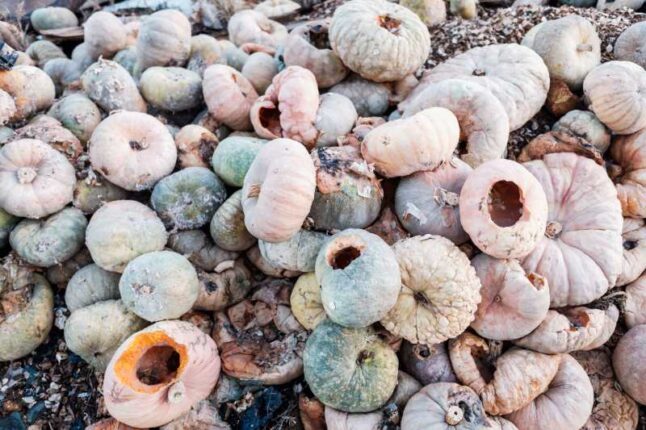
Pumpkins, beyond being the stars of the spooky season, are a rich source of nutrients, making them a fantastic addition to your compost pile or garden.
Here’s how you can give leftover pumpkins a second life:
- Composting: Begin by chopping the used pumpkin into smaller pieces. This speeds up the decomposition process. Add these chunks directly to your compost bin, where they’ll mix with other organic waste and create a nutrient-rich compost over time.
- Direct nourishment: If composting isn’t your thing, consider burying small pumpkin scraps directly into your garden, especially near the root zones of plants. As they break down, the pumpkins will offer a slow release of nutrients to plants. This method is particularly beneficial for sandy soils, which often struggle to retain nutrients.
5. Preserve Pumpkin Seeds for Planting
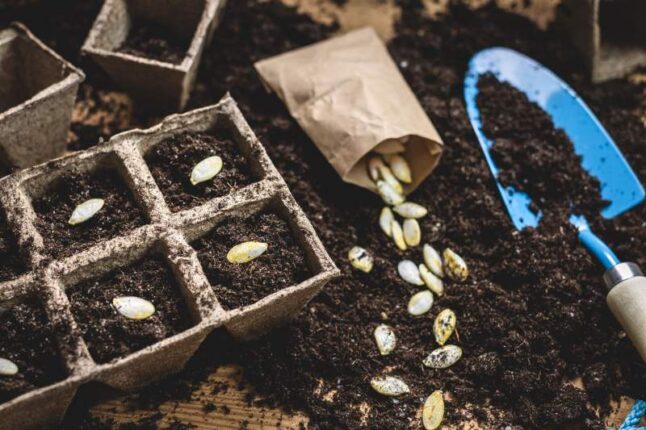
If you’re a pumpkin lover, one of the most rewarding ways to give purpose to your post-Halloween pumpkin is by preserving its seeds for future planting. This sustainable approach gives you a head start for next year’s pumpkin patch and allows you to enjoy the full lifecycle of this beloved gourd.
Here’s a step-by-step guide on how to preserve pumpkin seeds for future planting:
- Harvest: Begin by scooping out the seeds from the center of the pumpkin. A simple spoon or scoop will do the trick.
- Clean: It’s crucial to clean the seeds thoroughly, removing any attached pulp or fibrous strands. These can encourage mold growth during storage. Rinse the seeds in a colander or sieve under running water to aid in the cleaning process.
- Dry: Once cleaned, spread the seeds out on a paper towel or a paper plate. Ensure they are in a single layer, not clumping together. Place them in a warm, dry place, and allow them to dry thoroughly. Wet seeds are prone to mold, so this step is critical for preserving their viability.
- Store: With your seeds dried, it’s time to store them until planting season. While pumpkin seeds are quite hardy, you can extend their longevity and improve germination rates by refrigerating or freezing them.
- Plant: When the time is right, usually from late May to early June, retrieve your seeds and prepare to plant them in well-draining soil. By this time, they’ll be eager to grow, giving you a jump start on the pumpkin season.
Tip: Beyond planting, pumpkin seeds are also a delightful and nutritious snack! Drizzle them with a touch of oil, season with spices, and roast until golden and crisp. The result is a healthy snack perfect for munching or as a crunchy topping for soups and salads.
6. Elevate Your Culinary Game
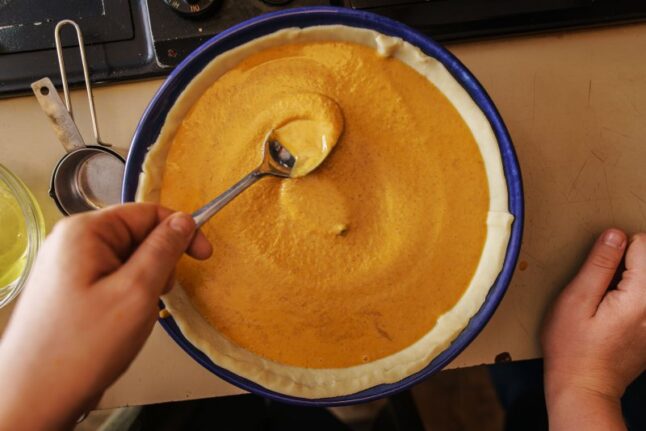
While the large pumpkins we use for Halloween decorations are not as sweet or flavorful as their smaller, cooking-specific counterparts, they’re far from destined for the trash heap once the festivities end. In fact, pureeing these leftover pumpkins can introduce a delightful, nutrient-rich dimension to your culinary endeavors.
According to the University of Rochester Medical Center, one cup of pumpkin puree, cooked, boiled, and drained, with no salt added, is low in calories, saturated fat, and sugar. This means you get a low-fat, high-nutrient addition to your next meal.
Here are a few ideas to inspire your kitchen experiments:
- Pumpkin macaroni and cheese: Incorporate the puree for a creamier consistency and a delightful twist to this comforting dish.
- Pumpkin pancakes: Boost your breakfast with added fiber and a unique taste.
- Pumpkin soup: This warming dish is perfect for chilly fall evenings.
- Pumpkin spice latte: Recreate this seasonal favorite at home, using real pumpkin for an authentic flavor.
- Pumpkin pie: The quintessential fall dessert, loved by many people all over the country.
- Pumpkin bread: Ideal for tea time or as a dessert, this moist loaf is a treat for the taste buds.
7. Nourish Farm Animals
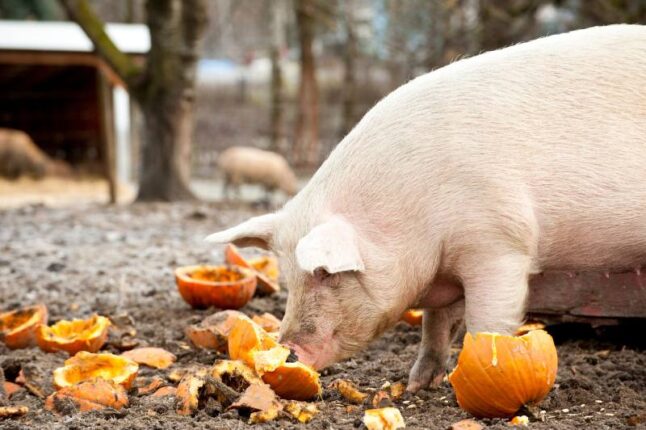
Leftover pumpkins, surprisingly, are a treat many animals look forward to. However, as with humans, moderation is key, and pumpkins should not be their main food source.
- For pigs: Swine are particularly fond of pumpkins. The juicy flesh and seeds delight them.
- Deer’s delight: If you live in an area with deer, placing pumpkins in your yard can be an unexpected treat for these graceful creatures.
- Chicken treat: If you’re a poultry keeper, your flock will appreciate the addition of pumpkin flesh and seeds. It is a fun source of variation in their diet, and the seeds can also act as a natural dewormer.
Warning: Always ensure the pumpkins are in reasonably good condition before offering them to animals. Rotten or moldy pumpkins can be harmful.
8. Donate Your Pumpkins
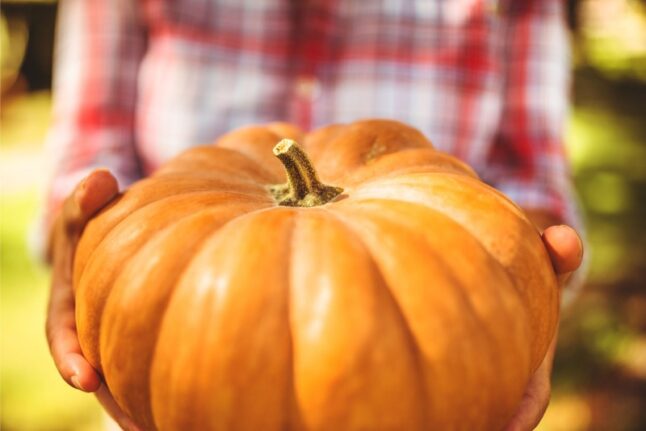
Not everyone has the luxury of sprawling backyard gardens or farm animals to share their post-Halloween pumpkins with. However, this doesn’t mean your pumpkins can’t find a meaningful second life.
Across many towns and cities, local farms, zoos, and animal sanctuaries are often more than happy to accept pumpkin donations after the spooky festivities.
Here’s why considering a pumpkin donation is a thoughtful idea:
- Eco-friendly disposal: Donating ensures that your pumpkins don’t end up in landfills but instead go back to nature, contributing to the ecosystem.
- Seasonal treat for animals: Farm animals and certain wildlife enjoy munching on pumpkins. They provide nutritional value and are a fun, seasonal treat many animals look forward to.
- Supporting local establishments: Donating pumpkins can be a small but impactful way to support local farms, zoos, and sanctuaries. It alleviates a portion of the financial burden related to purchasing feed.
Tip: Always call or check online to see if the establishment accepts pumpkin donations before heading there.
FAQ About Pumpkins
If kept away from extremes of hot sun or freezing conditions, an uncarved pumpkin can last anywhere from two to three months. This makes it a durable decoration that can seamlessly transition from Halloween to Thanksgiving.
However, if you’ve carved your pumpkin into a jack-o’-lantern, its lifespan is significantly reduced. Carved pumpkins typically last between 5 to 10 days.
Preserving your pumpkin’s lifespan, especially after carving, can be achieved with some simple preventive measures:
• Pre-carve cleaning: Before you start carving, give your pumpkin a good cleaning with a bleach solution. This helps kill off any lingering bacteria that can accelerate the rotting process.
• Shady storage: Keep your pumpkin out of direct sunlight. The sun’s rays can expedite the decomposition process. A shaded spot ensures your pumpkin stays fresh for longer.
• Opt for LED lights: Live flames, such as candles, can cook the pumpkin from the inside, causing it to degrade faster. Instead, use battery-operated LED lights.
• Protective coating: Once carved, apply vinegar or petroleum jelly to the interior and the raw edges of the pumpkin. This provides a protective barrier, keeping out bacteria and mold and locking in the pumpkin’s moisture.
Yes, dogs can eat pumpkin as part of their diet. Pumpkin is rich in vitamins A, C, and E, contains minerals like iron and potassium, and aids in digestion. However, when introducing pumpkin to your dog’s meals, it’s best to start with smaller quantities to ensure you don’t add too much fiber suddenly.
Beyond Pumpkins, Towards a Lush Lawn
If, despite your best composting efforts, your lawn and garden aren’t thriving as you’d hoped, don’t hesitate to call a local lawn care professional. After all, there’s nothing better to complement those festive pumpkins than a vibrant green lawn.
Main Photo Credit: RossHelen / Canva Pro / License